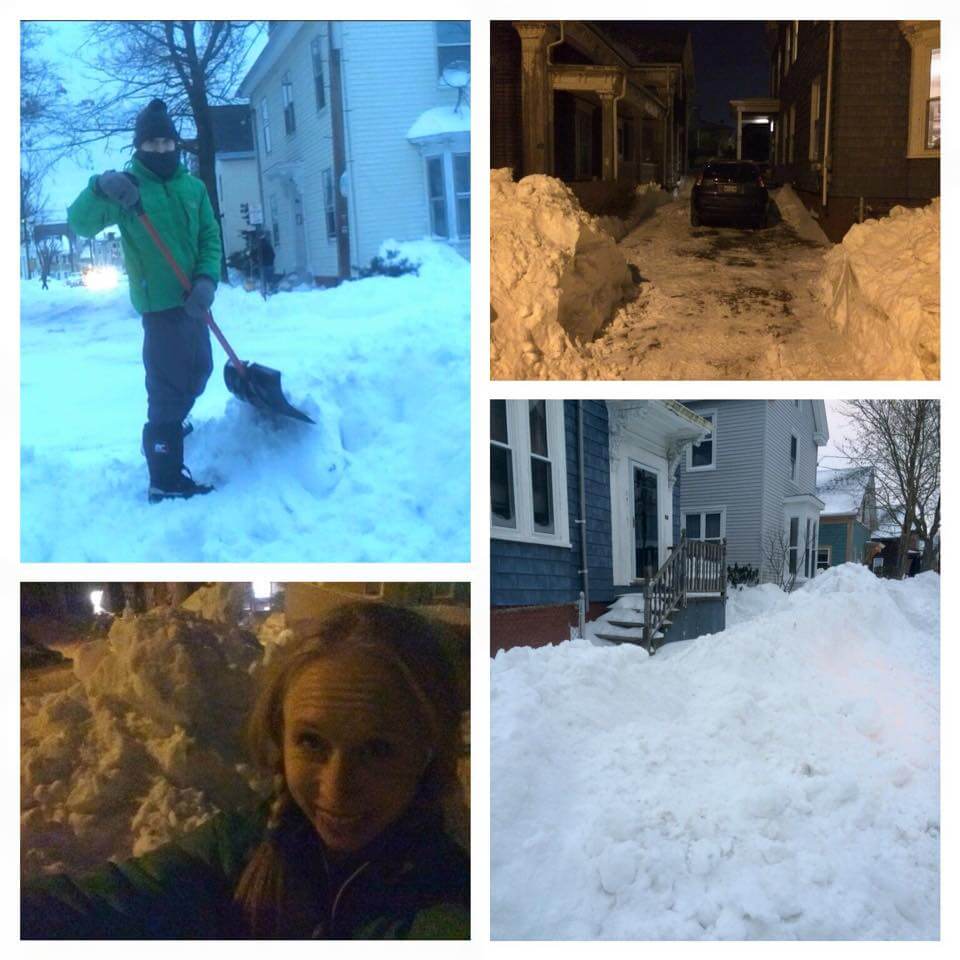 By Laura Petrolino
By Laura Petrolino
It’s that time of year again, when shoveling becomes one of my most practiced hobbies. It’s a very ritualistic part of my day in the winter (and I actually sort of love it).
I shovel in the morning, I shovel in the evening, I make plans to shovel with friends on the weekends. I even occasionally catch myself feeling jealous of some of my neighbor’s shovels because they are so cool or effective looking.
Shovel Your Way to a Successful Communications Strategy
Yesterday, while spending a fair amount of the day shoveling from our latest storm (a really nice one—great snow), I started thinking about (…..seriously folks, how long have you known me? You knew this was going to become an analogy post, right?) how successful shoveling really mimics many aspects of executing a successful communications strategy.
So here we go….the snow shoveler’s guide to communication strategy.
Understand the Foundation
Before I shovel a piece of my walk or driveway I evaluate what the foundation—underneath the layers of snow—is like.
For example, parts of my driveway are concrete, parts (the parts that I curse every winter) are gravel, and parts (@#&?!) have random roots growing out.
When you create a communications strategy you must do the same. You must understand:
- The business
- The target market
- The competitors
- The industry
(*these are just broad buckets, obviously the details are very important here)
And you must have a crystal clear understanding of objectives and goals. While goals are the “end point,” they are part of the foundation.
I think of this as the alpha and the omega.
Also, by understanding what the foundation looks like, I can have a more clear vision of what the goal looks like. I know success on the concrete section of my walk is clear pavement. Whereas success on the gravel sections is totally different—a snow covered smoothness.
This is also a very important distinction you must be able to make in your communications strategy.
Pay Attention to Technique
I talked in detail about technique in my post last week, and here it is again. Long story, short—technique is crucial. Without it you’ll hurt yourself, be ineffective, and short change your goals.
The Right Equipment Can Help
Every day, during the winter, I say a pray of gratitude to the deities of my daily survival:
- Outdoor Research mittens (p.s. Outdoor Research not only has great winter gear, but they do a rockstar job with their content marketing strategy)
- Northface Jacket
- Sorel boots
- And an endless variety of demigods in the form of hats, scarfs, and really warm knee and thigh high socks.
These things help me be effective, give my strategy longevity (just say no to hypothermia), and produce a better product/end goal.
Here is the important part though: The tools don’t accomplish my goals, they support them. They allow me be a better (and happier) shoveler—but I’m the center-point. Even for those people who have a snowblower—someone’s behind the wheel.
Likewise in a communications strategy, tools can help support success, but the communications team is what drives it.
Tools will never successfully drive a communications strategy.
Make Strategic Partnerships
Shoveling brings people together. I visit with neighbors while I’m out there, people stop by to say hi and catch up, the community will support those who maybe can’t handle the shoveling on their own (I’ve been invited to shovel parties to help shovel for someone who is sick or struggling through something that prevents them from handling the task on their own.
Likewise, my neighbor will snow blow part of my walk, and I’ll make sure I keep things clear of his oil tank so it’s easy for the delivery guy to get in to refill.
Partnerships support success in shoveling and communications strategy
Set Milestones
Especially during a large storm, shoveling is an endurance sport. Sometimes you’ll shovel one section clean and by the time you get a fourth of the way through the next one, your first section already looks like you haven’t touched it. It’s easy to get discouraged, so you must set success milestones and track to see how you are doing against them.
In communications strategy this translates into several important concepts.
- Set expectations: Your client isn’t going to be on the cover of the Wall Street Journal the day after they hire you—and no, not the week after either. Set exception on timeline and deliverables from day one.
- Track, measure, evaluate. You know the drill. Understand which PR metrics you should use to evaluate success and consistently track and evaluate them.
And be sure as you do this, you understand that this measurement will probably change the way you see the “foundation” discussed above— and how you go about clearing the path to success.
Prepare for the Next Storm
Here in Maine, unless it’s June, you know that you are going to have another storm around the corner (and there is actually still a small possibility in June). Another storm that brings more snow which you are going to have to find a place for.
So you need to think long-term.
In the initial storms of the year I could go the easy route and shovel things to the most convenient place possible, but that would royally screw me over in the long-term. Not only would it make my life miserable, it would prevent me from successfully reaching my goal (at least without desperate measures).
In shoveling, communications strategy, and life….always evaluate short-term gain vs. long-term success.
And there you have it friends. Shovel your way to communications strategy success (and don’t get stuck in your driveway).
Photo credit: Me! After A LOT of shoveling time during our blizzard last year.